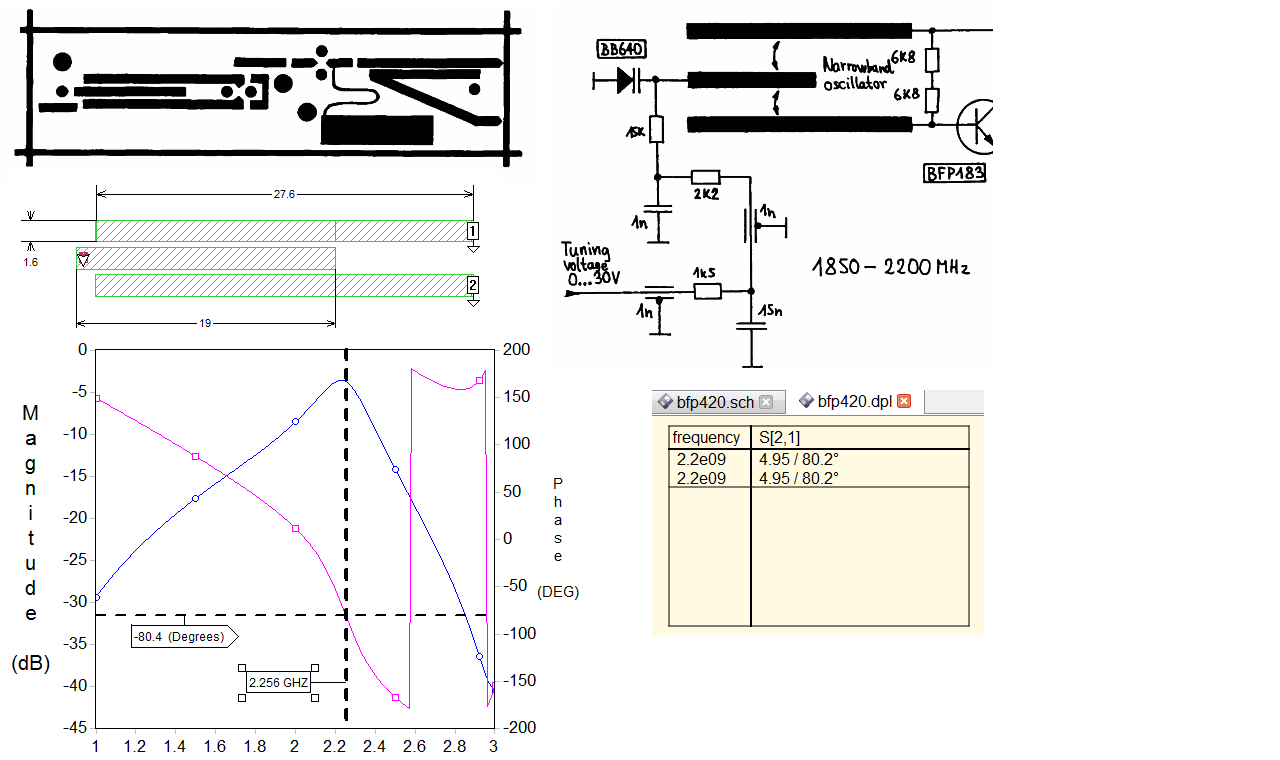Learning from photos of microwave circuits using Sonnet Lite and Qucs.
时间:03-30
整理:3721RD
点击:
Here is one nice approach i use when finding interesting microstrip circuit on the internet (papers, websites, etc.):
1. Find element with known size on the photo
it can be capacitor, 50 Ohm line width (if substrate Er and thickness is known) or something else
2. Scale photo in such way, that pixel size would represent 0.1mm. For example, 1000x1000 pixels photo will represent area of 100x100 mm.
3. Measure microstrip, stub sizes, etc. It is easy, because just cutting them from the photo will give their's pixel size. And each pixel represent 0.1mm length.
4. Now put all that elements into simulator (Sonnet Lite, Qucs, etc.).
Here is finger filter measured this way and put in Sonnet Lite and Qucs:
it is from s53mv's website (http://lea.hamradio.si/~s53mv/spectana/vco.html)
Also i put S-parameters of transistor, just was curious if phase would be around zero.
Using this approach i learned about LNAs and some practical matching with stubs.
p.s. Also if photos made with some angle, it can be skewed to be rectangular. And even more advanced approach - do reverse perspective projection to get even more precise results.
1. Find element with known size on the photo
it can be capacitor, 50 Ohm line width (if substrate Er and thickness is known) or something else
2. Scale photo in such way, that pixel size would represent 0.1mm. For example, 1000x1000 pixels photo will represent area of 100x100 mm.
3. Measure microstrip, stub sizes, etc. It is easy, because just cutting them from the photo will give their's pixel size. And each pixel represent 0.1mm length.
4. Now put all that elements into simulator (Sonnet Lite, Qucs, etc.).
Here is finger filter measured this way and put in Sonnet Lite and Qucs:

it is from s53mv's website (http://lea.hamradio.si/~s53mv/spectana/vco.html)
Also i put S-parameters of transistor, just was curious if phase would be around zero.
Using this approach i learned about LNAs and some practical matching with stubs.
p.s. Also if photos made with some angle, it can be skewed to be rectangular. And even more advanced approach - do reverse perspective projection to get even more precise results.
microwave photos Learning 相关文章:
- Microwave Office CPW EM-Simulation
- The simulation of microwave antenna of nanofilm Ti3C2 (Mxene)
- Microwave Imaging Breast cancer detection
- Microwave Plasma source CST Simulation
- Microwave Office Axiem include capacitors etc.
- COMSOL simulation of microwave heating in a liquid placed on a CPW transmission line
